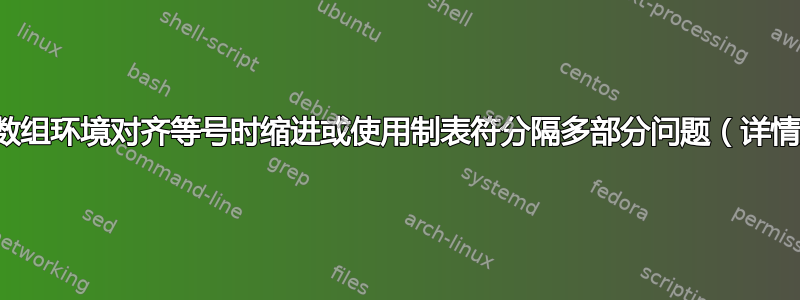
\documentclass{article}
\usepackage[shortlabels]{enumitem}
\usepackage{amsmath}
\begin{document}
Let \(f(x)=2x^2-12x+13\)
\begin{enumerate}[(a)]
\item Express $f$ in standard form.
\begin{align*}
f(x)&=2x(x-6x)+13 \\
&=2x(x-6x+9)+13-(2\times9) \\
&=2x(x-3)^2-5
\end{align*}
\end{enumerate}
\end{document}
答案1
喜欢这个 (只限项目 a) 吗?
编辑:
在您的文档中,您似乎希望等于零\parident,并且所有列表项标签都从文本的左边框开始。这可以通过 MWE 的第一个版本中的更改来实现,现在标记为% <---:
(红线表示文本块边框)
\documentclass{article}
%\usepackage{geometry}
%---------------- show page layout. don't use in a real document!
\usepackage{showframe}
\renewcommand\ShowFrameLinethickness{0.15pt}
\renewcommand*\ShowFrameColor{\color{red}}
%---------------------------------------------------------------%
\usepackage{lipsum}% For dummy text. Don't use in a real document
\usepackage{enumitem} % <---
\setlist[enumerate]{label=(\textbf{\alph*}), % <---
align=left, % <---
leftmargin=*} % <---
\usepackage{tabularray}
\UseTblrLibrary{amsmath}
\setlength\parindent{0pt} % <---
\begin{document}
Let \(f(x)=2x^2-12x+13\)
\begin{enumerate} % <---
\item Since the coefficient of $x^2$ is not 1, \dots
\begin{tblr}{colspec={@{} Q[l,m, mode=math]@{\,}
Q[l,m, mode=math]
X[l,m, font=\small\linespread{0.84}\selectfont,
fg=cyan7]},
row{Z} = {belowsep+=1ex}
}
f(x)
& = f(x)=2x^2-12x+13
& \\
& = 2x(x-6x)+13
& Factor 2 from the $x$ terms \\
& = 2x(x-6x+\textcolor{red}{9})+13-(2\cdot\textcolor{red}{9})
& {Complete the square: Add 9 inside\\
parenthesis, subtract $2\cdot 9$ outside} \\
& =2 x(x-3)^2-5
& Factor 2 from the $x$ terms
\end{tblr}
The standard form is ...
\item From the standard form of $f$ we can ...
\end{enumerate}
\item Since the coefficient of $x^2$ is not 1, \dots
\begin{tblr}{colspec={@{} Q[l,m, mode=math]@{\,}
Q[l,m, mode=math]
X[l,m, font=\small\linespread{0.84}\selectfont,
fg=cyan7]},
row{Z} = {belowsep+=1ex}
}
f(x)
& = f(x)=2x^2-12x+13
& \\
& = 2x(x-6x)+13
& Factor 2 from the $x$ terms \\
& = 2x(x-6x+\textcolor{red}{9})+13-(2\cdot\textcolor{red}{9})
& {Complete the square: Add 9 inside\\
parenthesis, subtract $2\cdot 9$ outside} \\
& =2 x(x-3)^2-5
& Factor 2 from the $x$ terms
\end{tblr}
The stabdard form is ...
\item From the standard form of $f$ we can ...
\end{enumerate}
\end{document}




